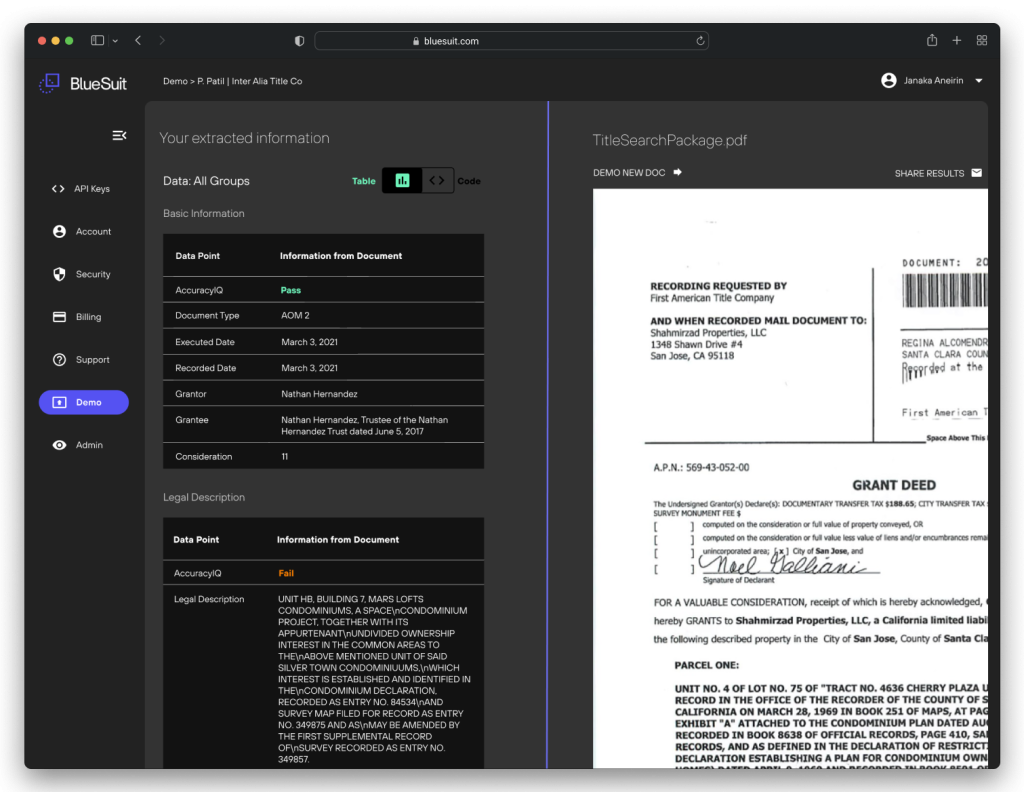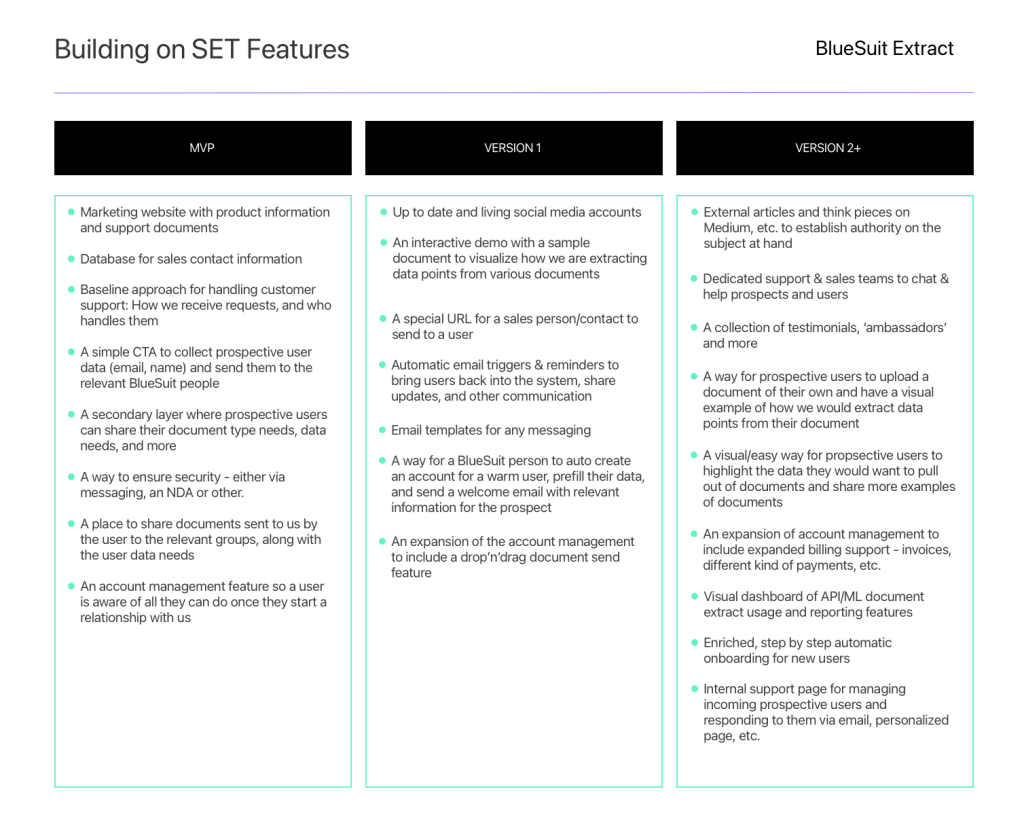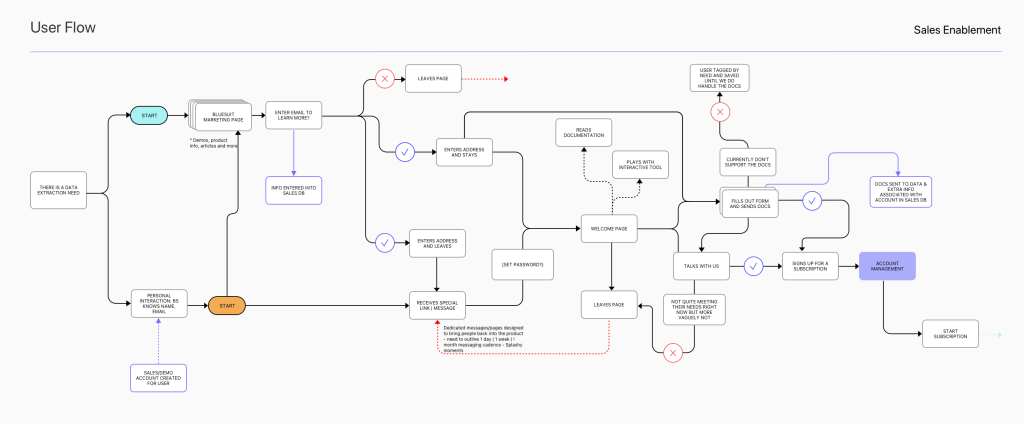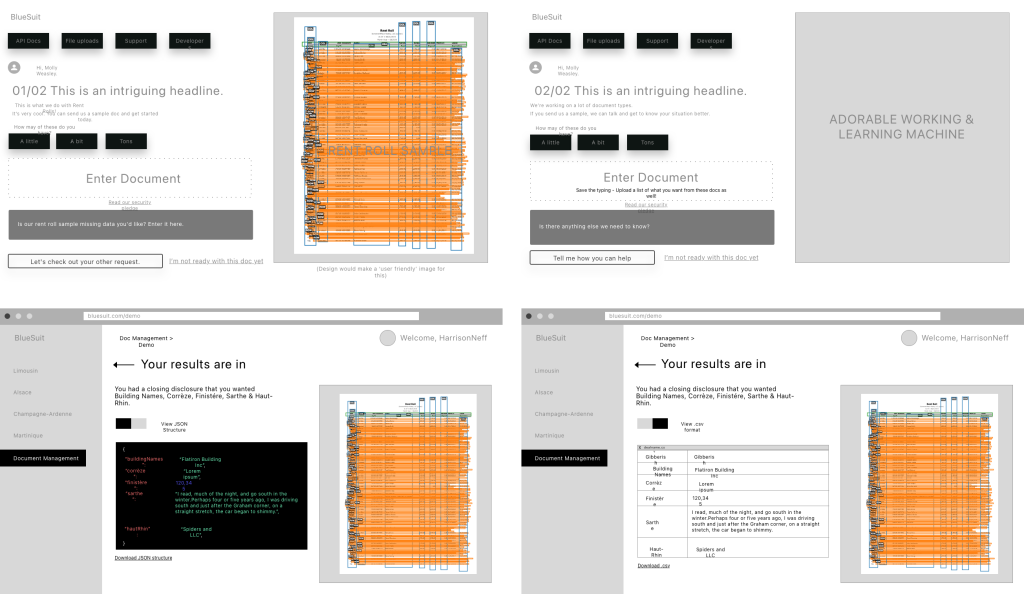How can you prove your API-based data extraction tool is accurate and valuable when there is no conventional UI?

What Happened
In a bid to showcase the capabilities of our API, which facilitated document processing through machine learning models and returned data in JSON format, I spearheaded a strategic initiative aimed at enhancing our sales demonstration process. Collaborating closely with a team comprising two engineers, another designer, and a product manager, our mission was to develop a live demo platform that could effectively illustrate our product’s functionality in a human-readable format during sales presentations.
Our primary objective went beyond mere visualization; we aimed to instill trust in our system by conducting live demos that seamlessly processed documents provided by users and delivered comprehensible results in real-time. This project presented a unique opportunity where our sales colleagues served as the end users, providing valuable insights into their needs and expectations. I developed an MVP set of features our team needed, and strategized how we could build and use the sales tool in the future.

To lay the groundwork for our endeavor, I conducted user interviews with demo presenters to gain a deeper understanding of the crucial aspects to highlight during sales calls. Additionally, I observed several sales meetings to identify potential “surprise and delight” moments crucial for B2B engagements.
Drawing inspiration from existing demo practices in similar companies and leveraging prior research on user pain points, we developed initial sketches outlining the essential components of our sales demo and its flow. I further delineated the sales cycle journey map to ensure alignment with the perspectives of all stakeholders involved.

Central to our demo experience was the integration of preliminary data collection to tailor our presentation to potential user needs. This not only provided valuable insights but also facilitated meaningful conversations between our sales team and prospective clients. We used the journey map and features plan to map out an initial user flow.

After discussions with our engineers, we changed the user flow to reflect technical capabilities at the current moment, while keeping in mind what changes we could make for future versions.
We then drafted wireframes to illustrate the intended user journey, ensuring that visual indicators of system status were unobtrusive yet informative. System notifications were incorporated to notify users of successful or failed processes.

Given the time constraints, our initial demo version featured static images and messaging for system status updates, with plans for future iterations to include more visually engaging elements. Nonetheless, the demo effectively showcased extraction results alongside original documents, allowing toggling between JSON payload and tabulated results.

The live demo tool became instrumental in our sales engagements, with ongoing efforts to refine the user interface, streamline the flow, and enhance backend performance. We planned to leverage the sales tool in a closed beta with users going forward to further expand our user base and gain valuable feedback.
I like to think the success of our demo in showcasing the API’s capabilities likely contributed to BlueSuit’s acquisition in January 2023.